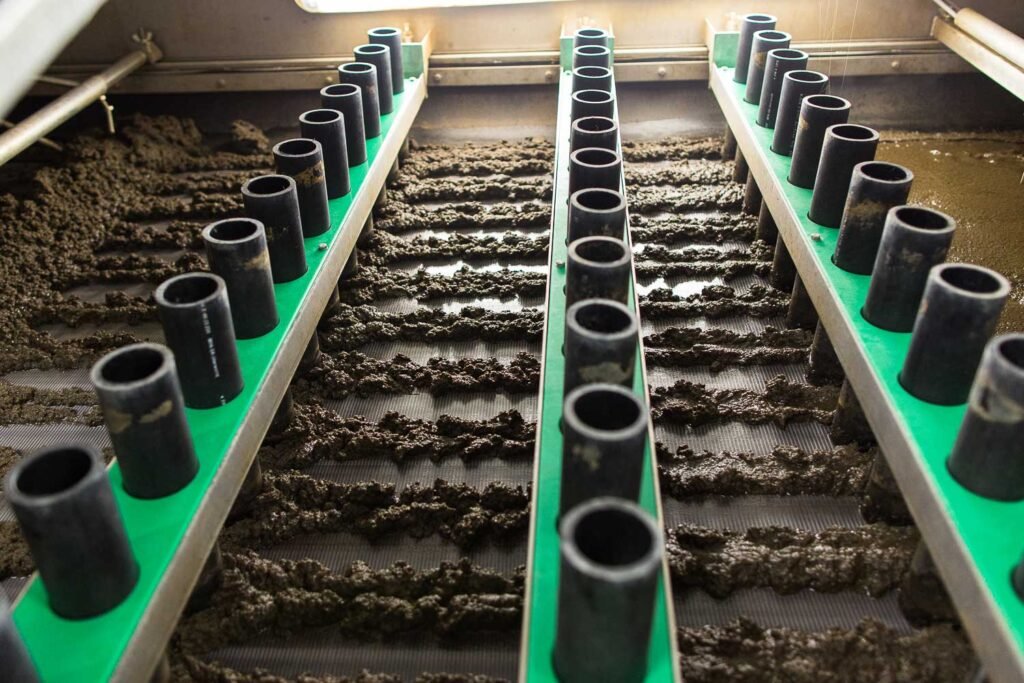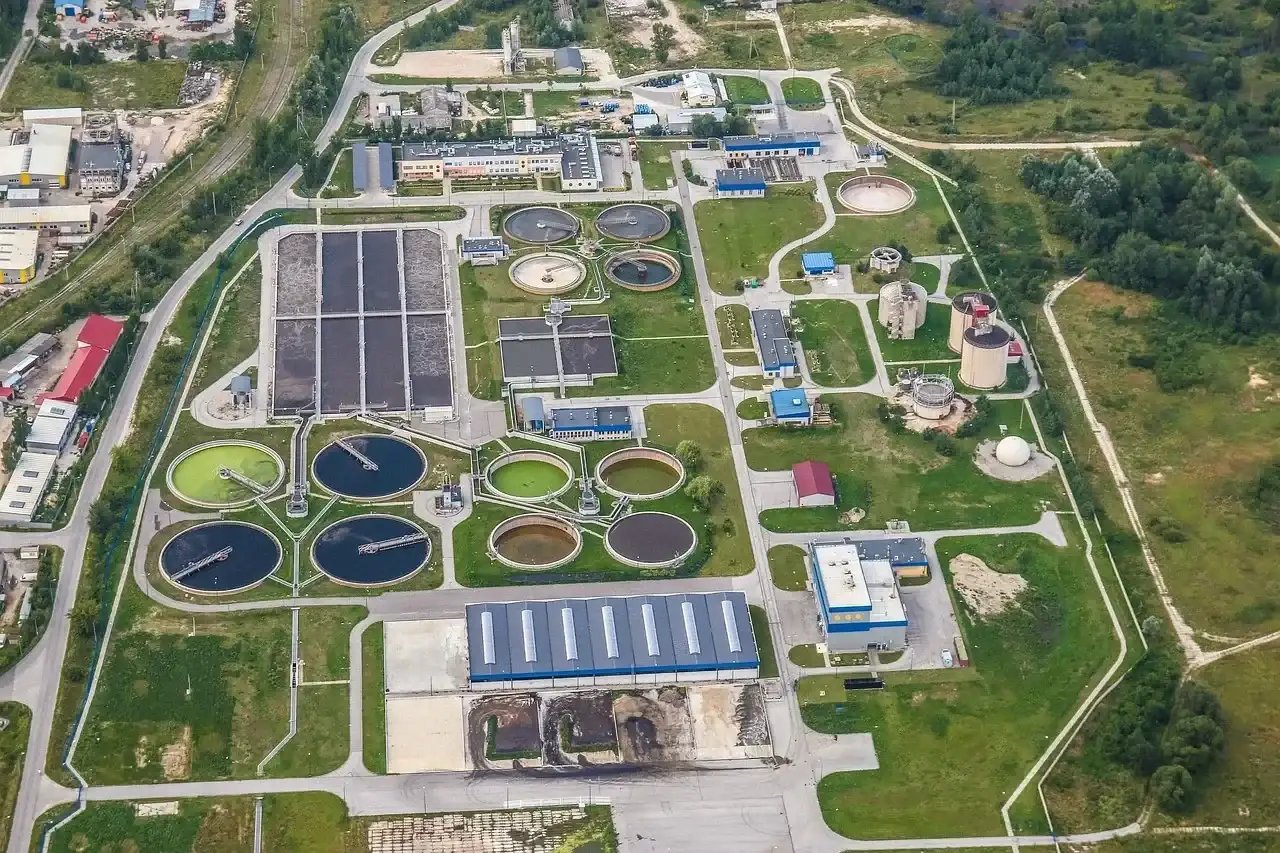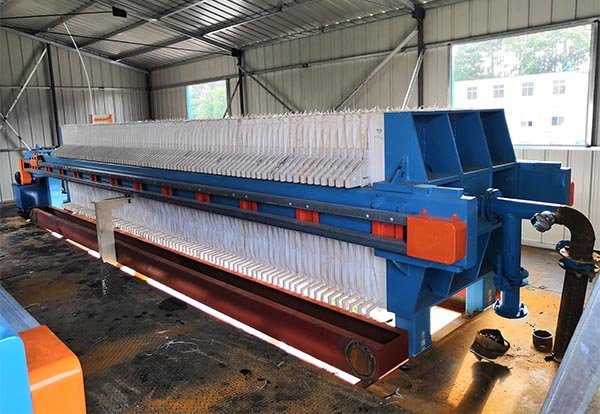Sludge Disposal Methods in Wastewater: Efficient and Sustainable Practices

Sludge disposal is an essential process in the management of waste produced by water treatment plants. The term ‘sludge’ refers to the semi-solid material that is left over after the treatment of sewage and industrial wastewater. Managing this byproduct effectively is critical to protecting public health and the environment. Methods of disposal must meet stringent regulatory requirements that govern the treatment, handling, and final disposition of sewage sludge.
The complexity of sludge disposal arises from the variety of contaminants it can contain, including pathogens, heavy metals, and organic compounds. As such, treatment plants employ several methods to handle sludge safely. These range from land application as fertilizer to incineration or landfilling. The choice of disposal method is influenced by factors such as the composition of the sludge, local regulations, environmental policies, and the availability of disposal options.
Key Takeaways
- Sludge disposal manages waste from water treatment and is crucial for health and environmental safety.
- Disposal methods are diverse and are selected based on sludge composition and regulatory compliance.
- Effective sludge management requires adherence to strict environmental standards and innovative handling techniques.
Overview of Sludge Disposal
Sludge disposal is a critical aspect of wastewater management, ensuring that the byproducts of sewage treatment are handled in a way that safeguards public health and the environment. It involves processes that are necessary for minimizing the potential hazards of sewage sludge.
Importance of Effective Sludge Disposal
Effective sludge disposal is essential for multiple reasons. Firstly, sludge contains harmful contaminants that, if not disposed of properly, can pollute water bodies, soil, and even the air we breathe. Secondly, proper disposal methods mitigate the spread of diseases and reduce exposure to pathogens. It is acknowledged that sewage sludge contains valuable nutrients, and when processed correctly, it can be repurposed, for instance, as fertilizer in agriculture thus contributing to resource recovery and sustainability.
Challenges in Sludge Disposal
One of the primary challenges in sludge disposal is the cost. Due to the complex treatment requirements, stringent environmental regulations, and the logistics involved in transporting sludge to disposal or treatment facilities, the expense of sewage sludge disposal can pose significant financial burdens on municipalities. Moreover, finding suitable disposal sites that meet all regulatory requirements while also being acceptable to the public is increasingly difficult. As population and urbanization grow, the production of sewage sludge is projected to increase, further escalating the challenges associated with its disposal.
Regulatory Framework
The regulatory landscape for sludge disposal is characterized by controls and standards put in place to protect environmental and public health. The U.S. Environmental Protection Agency (EPA) serves as the central body in establishing these regulations.
EPA Sludge Treatment and Disposal Regulations
The EPA has a comprehensive framework targeting the treatment, management, and disposal of sludge. This is driven by the need to safeguard against the potential hazards sludge poses to the environment and public health. Key legislation includes the Resource Conservation and Recovery Act (RCRA) and the Clean Water Act (CWA), each addressing different aspects of sludge management.
Under the RCRA umbrella, specifically Title 40 of the Code of Federal Regulations part 257, criteria are set for sludge disposal, particularly for facilities that do not require a permit. These criteria aim to prevent the contamination of drinking water sources and to ensure sludge is disposed of in a manner that is not harmful to the environment or human health.
In detail, the EPA regulates sludge disposal through the National Pollutant Discharge Elimination System (NPDES) permits, part of the CWA. These permits govern the discharge of treated wastewater and sludge into surface waters, ensuring they meet established pollutant concentration levels to minimize environmental impact.
Furthermore, the EPA has developed a detailed sludge disposal management plan that includes guidelines and best practices for the safe processing and disposition of sewage sludge. This incorporates both short-term handling and long-term monitoring strategies, with an emphasis on facilitating compliance and enforcement.
Organizations managing sludge disposal must adhere to these standards, which often involve regular reporting and monitoring to remain within compliance. Compliance with these regulations ensures a systematic and environmentally sound approach to handling sludge, reinforcing the principle that effective waste management is integral to protecting human health and the environment.
Sludge Disposal Methods
The disposal of sludge is a critical environmental concern, and various methods are employed to manage this waste product effectively. These strategies are designed to mitigate the impact on the environment while ensuring that public health is not compromised.
Land Application
The land application involves the controlled spreading of sludge onto the soil surface or its incorporation within the soil. This method is beneficial as it recycles nutrients, such as nitrogen and phosphorus, back into the soil. However, regulations require that the sludge is treated beforehand to reduce pathogens and minimize the risk of contaminating ground and surface waters.
Ocean Dumping
Although not commonly practiced due to international treaties and environmental concerns, ocean dumping has historically been one of the sludge disposal methods. It involves depositing sludge into the ocean. Due to the potential for harm to marine ecosystems and food chains, this method is highly regulated and, in many places, completely banned.
Incineration
Incineration refers to the combustion of sludge at high temperatures to reduce its volume and convert it into ash, flue gas, and heat. The incineration sludge disposal method is effective for chemical sludge disposal, as it neutralizes hazardous constituents. The process, which reduces the need for landfill space, can also generate energy that may be used for power or heating.
Landfilling
The ultimate disposal in a landfill is another common practice, where sludge is buried. Modern landfills are designed to protect the environment from contaminants in the sludge. Considerations for this method include the potential for leachate formation and the necessity of long-term monitoring to safeguard against environmental leakage.
Wastewater Treatment and Sludge
The management of wastewater sludge, a byproduct of the treatment process, is a critical component of maintaining environmental safety and hygiene. This section explores the intricate process of treating wastewater and the distinct characteristics of the resultant sludge.
Wastewater Treatment Process
During wastewater treatment, contaminants are removed from water through a series of stages designed to restore its quality. The process begins with primary treatment, where solids are allowed to settle and are removed, followed by secondary treatment, involving biological processes to degrade organic matter. Tertiary treatment may include chemical or physical methods to meet specific standards before discharge. Throughout these stages, the sludge—comprising solids and semi-solids—is continuously separated from the cleaned water.
- Primary Treatment: Screening, sedimentation, and floatation
- Secondary Treatment: Biological aeration, oxidation, and nitrification
- Tertiary Treatment: Filtration, disinfection, and further purification
Wastewater Sludge Characteristics
Wastewater sludge is a mixture of organic and inorganic materials, which results from various treatment processes. It is generally categorized as primary or secondary sludge, with the former originating from sediment during the primary stage and the latter from microbial biomass during secondary treatment. The characteristics of sludge are vital to determining appropriate wastewater sludge disposal methods.
- Primary Sludge: Thick, raw constituents with a high percentage of settable solids
- Secondary Sludge: Lighter, biologically active material with residual organic matter
When it comes to waste sludge disposal, the specific characteristics of sludge will influence the choice of disposal or reuse methods, including land application, incineration, or landfills. Wastewater treatment sludge disposal requires adherence to environmental regulations to mitigate health risks and ensure sustainable practices.
Methods of Disposal for Wastewater Sludge:
- Land application: beneficial reuse as a soil conditioner
- Incineration: volume reduction and energy recovery
- Landfilling: final disposal option for dehydrated sludge
Each disposal method must consider the treatment level, potential contaminants, and environmental impact to ensure that wastewater sludge disposal is conducted responsibly and efficiently.
Water Treatment Plants and Sludge
Water treatment plants play a critical role in processing and purifying water, but a byproduct of this process is the generation of sludge. Effective management and disposal of sludge are essential to maintain environmental standards and public health.
Drinking Water Treatment Plant Sludge
In drinking water treatment plants, sludge is primarily generated during the clarification and filtration stages. This sludge contains a mixture of water, minerals, and sometimes chemical precipitates that are removed from the source water to ensure its safety for consumption.
Proper disposal of sludge from water treatment plants is governed by stringent regulations to prevent potential environmental contamination. Treatment plants typically manage sludge through processes such as thickening, dewatering, and stabilization before disposal. The final disposition of water treatment sludge can include options like land application, landfilling, or incineration.
- Thickening: It concentrates sludge by removing a portion of the water.
- Dewatering: Further reduces water content, making the sludge more solid and suitable for disposal.
- Stabilization: Involves treating the sludge to reduce odor and minimize the potential for decomposition.
These processes aim to minimize the volume of sludge that requires disposal, thereby reducing the costs and environmental impact associated with sludge management. Additionally, treated sludge from water treatment plants can sometimes be repurposed as a soil amendment in agriculture, provided it meets safety criteria.
Sewage Sludge Handling
Effective sewage sludge handling is an intricate process that involves the treatment and disposal of sewage sludge. This by-product of wastewater treatment must be managed properly to mitigate environmental and health risks.
Sewage Sludge Treatment
Treating sewage sludge is a critical step that precedes disposal to ensure the material is safe and stable. Primary treatment typically involves a digestion process: aerobic or anaerobic. Aerobic digestion uses oxygen to break down organic matter, while anaerobic digestion occurs without oxygen and produces biogas that can be used as an energy source. Post digestion, dewatering occurs to reduce sludge volume, making it easier and more cost-effective to transport.
Advanced treatment methods include lime stabilization, where lime is added to increase the pH, eliminate pathogens, and reduce odor. Another technique is thermal drying, where sludge is heated to evaporate water, resulting in a dry product that can be used as a soil amendment or disposed of in a landfill.
Sewage Sludge Disposal Methods
There are several options for the final disposal of treated sewage sludge:
- Land Application: Often used as fertilizer on agricultural land due to its nutrient-rich content. It is subject to regulations to protect human health and the environment.
- Landfilling: Sludge can be deposited in a landfill, provided it meets certain criteria to minimize leaching of contaminants into groundwater.
- Incineration: This method involves burning sludge to reduce its volume and potentially recover energy.
Municipal sludge disposal is monitored and regulated to prevent pollution. The US EPA has established guidelines under the Part 503 Biosolids Rule that outline safe practices for biosolids management and disposal methods. These stringent standards ensure that the disposal of municipal sewage sludge protects public health and conserves the environment.
Industrial Sludge Management
Industrial sludge management involves specific strategies for handling waste byproducts from various industries, focusing on safe disposal methods and adherence to environmental regulations. This section details the processes involved in disposing of oil sludge and the considerations for dealing with alum sludge.
Oil Sludge Disposal
Oil sludge is a byproduct of the oil production and refining process, consisting of oil, water, and solid sediments. The proper disposal of oil sludge is critical to prevent environmental contamination. Companies often use thermal methods such as incineration or advanced technologies that can recover oil from sludge, transforming waste into a resource. It is pivotal that these processes conform to the National Pollutant Discharge Elimination System (NPDES) regulations to mitigate the impact on water bodies.
Alum Sludge Considerations
Alum sludge, which primarily comes from water treatment facilities, requires special attention due to its composition of aluminum hydroxide and other chemicals. Unlike oil sludge, alum sludge is often reused; it can be applied in agricultural settings as a soil amendment, provided it is free from toxic substances. However, disposal must also consider Effluent Guidelines to ensure that any release into surface waters does not exceed permissible limits for contaminants. It’s essential to evaluate the potential environmental impacts before deciding on the disposal or recycling of alum sludge.
Innovative Disposal Techniques
Advancements in sludge disposal techniques are transforming waste management by offering more efficient and environmentally friendly methods. These innovative approaches not only alleviate the burden on landfills but also contribute to sustainability goals.
Emerging Sludge Disposal Technologies
- Thermal Conversion: This process leverages high temperatures to convert sludge into reusable byproducts like ash, which can be used in construction materials. By greatly reducing the volume of sludge, thermal conversion streamlines the disposal process and maximizes resource recovery.
- Anammox Process: Anaerobic Ammonium Oxidation (Anammox) is a cutting-edge biological procedure that treats nitrogen-rich sludge without the need for aeration, saving significant amounts of energy. It also reduces greenhouse gas emissions compared to conventional methods.
- Electrodialysis: One of the emerging technologies in sludge disposal, electrodialysis, uses electrical currents to separate and remove contaminants. This method decreases the volume of waste requiring disposal and recovers resources that can be reused.
- Algal Treatment: Utilizing algae to treat sludge can be advantageous in both waste reduction and the production of biofuels. Algae break down waste materials while also capturing carbon dioxide, producing biomass that can be converted into energy sources.
- Pyrolysis and Gasification: Both pyrolysis and gasification are thermal techniques that decompose organic materials at high temperatures, with limited oxygen for pyrolysis and with a controlled amount of oxygen for gasification. These processes minimize waste and can generate energy-rich gases, offering a dual benefit to waste management.
Environmental and Health Impact
When discussing the environmental and health impacts of sludge disposal, it is crucial to consider the methods and protocols involved in the sludge disposal process. Inadequate disposal can lead to severe repercussions for ecosystems and human health.
Impact of Improper Disposal
Improper sludge disposal can result in contaminants leaching into soil and water bodies. Heavy metals, pathogens, and organic toxins from sludge can accumulate in the environment, posing significant risks.
Soil Contamination:
- Heavy Metals: Lead, mercury, and cadmium can persist in soil, affecting plant growth and entering the food chain.
- Organic Toxins: Pesticides and industrial chemicals can degrade soil quality and affect biodiversity.
Water Pollution:
- Nutrient Overload: Excess nitrogen and phosphorus can lead to eutrophication, creating dead zones in aquatic ecosystems.
- Pathogens: Bacteria and viruses from sludge can contaminate drinking water sources, causing waterborne diseases.
Air Quality Deterioration:
- Odors: Volatile compounds released during sludge decomposition can cause foul smells.
- Particulate Matter: Aerosolized particles can contribute to air pollution, affecting respiratory health.
Human Health Risks:
- Direct Contact: Individuals exposed to untreated sludge may face health issues from toxic substances.
- Indirect Exposure: Consumption of contaminated food or water can lead to the accumulation of toxins in the human body.
The sludge disposal process must prioritize containment and treatment of harmful constituents to mitigate these impacts. Regulations and best practices in sludge management are critical to protect environmental and public health.
Case Studies and Best Practices
The following section provides insight into well-regarded sludge disposal methods that have proven effective and sustainable in various municipalities.
Exemplary Disposal Programs
- Land Application: Some municipalities have adopted land application, where treated sludge is used as a soil conditioner, greatly benefiting agricultural lands. An example of this is seen in communities where strict testing ensures that the sludge meets safety standards for nutrients and pathogens before application.
- Anaerobic Digestion: This process reduces the volume and mass of sludge, producing biogas that can be used for energy generation. The city of Oslo has implemented a successful program where the biogas produced is utilized to power public buses.
- Thermal Treatment: Cities like Tokyo have turned to incineration to reduce the volume of sludge and recover energy from the waste. Advanced filtering technology ensures emissions are clean and within regulatory limits.
- Composting: A widely adopted practice where sludge is treated and mixed with materials like wood chips to produce compost. Denver’s composting program has been lauded for converting waste into a useful product while also engaging the community through free compost giveaways.
Each method has its specific benefits and challenges, but with proper management and adherence to environmental regulations, they serve as crucial steps toward sustainable waste management.
Frequently Asked Questions
What are the acceptable methods for sludge disposal in wastewater treatment?
Acceptable methods for sludge disposal include landfilling, incineration, and application to agricultural land. Each method must comply with regulations such as those enforced by the National Pollutant Discharge Elimination System (NPDES).
How does the cost of sludge disposal vary by method?
The cost of sludge disposal varies significantly by method; landfilling tends to be less expensive compared to incineration, which requires more energy and infrastructure. Agricultural applications may incur costs associated with transportation and regulation compliance.
Can you guide the treatment processes before sludge disposal?
Treatment processes before sludge disposal typically involve digestion, dewatering, and stabilization to reduce volume and eliminate pathogens. Guidance on these processes can be found through resources like the U.S. Environmental Protection Agency.
What techniques are employed for the environmentally safe disposal of sewage sludge?
Environmental safety in sewage sludge disposal is achieved through techniques such as anaerobic digestion, composting, and thermal processing to reduce toxicity and mitigate environmental impact.
In what ways can waste sludge be repurposed or recycled?
Waste sludge can be repurposed as a soil conditioner in agriculture, recovered for biogas production, or processed into biosolids for landscaping. Recycling efforts focus on resource recovery and minimizing waste.
Where are legally compliant facilities for sludge disposal typically located?
Legally compliant facilities for sludge disposal are typically located at a safe distance from population centers and water sources. Their locations adhere to zoning regulations and environmental requirements, often detailed in resources like the Enforcement and Compliance History Online (ECHO).



